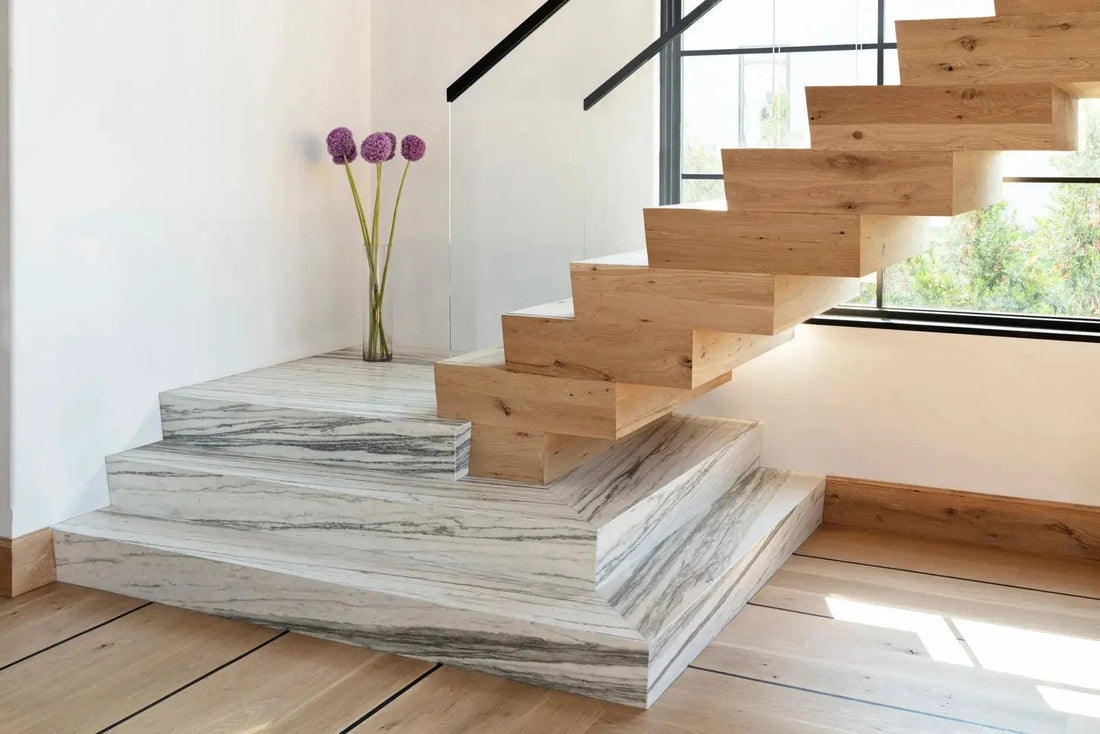Polished to Perfection: Unveiling the Timeless Grandeur of Stone
by Samaksh Tayal 18 Feb 2025 0 Comments
Introduction Of Polished Finish on Stone
- A polished finish on stone adds a timeless sophistication, luxury and unmatched elegance, making it one of the most in-demand finish in both residential and commercial spaces
- It is known for its high-gloss, mirror-like surface, and polished stone reflects light beautifully, creating an illusion of space and brightness in any room.
- This property not only enhances the natural colours and patterns but also adds a layer of grandness to floors, countertops and decorative surfaces.
- This finish is a symbol of opulence and superior craftsmanship.
- The polished surface is achieved by grinding the stone surface with abrasive materials and fine diamond grits until a smooth surface is achieved.
- This is a labour-intensive process which helps bring the true character of natural stone highlighting its veins, colours and intricate patterns
- They are also resistant to moisture, durable and easy to clean.
- However, they become slippery when wet and has a tendency to show scratches when compared with a matt finish
- Polished stone is used a lot in interior design projects, architectural marvels, and outdoor landscaping where visual appeal is important.
History and Evolution of Polished Finish
- The art of polishing stone dates back to thousands of years, first seen with the civilisations like ancient Egyptians, Greeks and Romans
- Monuments like the Great Pyramids of Giza, the Parthenon in Athens, and the Roman Colosseum are live examples of the timeless appeal of the polished surface
- At that time, artisans heavily relied on manual grinding techniques which required sand, water and basic tools to bring out a reflective surface, this process often took years to perfect a single slab
- In the Renaissance period, polished marble was the centrepiece of attraction in European palaces, cathedrals, and aristocratic homes which symbolises sophistication, artistic refinement and wealth
- After the industrial revolution, the machines were used in polishing the stone and the process became mechanised, which allowed for mass production and improved finesse.
- The development of new tools and machinery like diamond abrasive and advanced polishing further revolutionised the industry,
- In today's time, digital technologies and automated machines have taken this art to a new level
- High-precision tools can customise the glossiness of the slab, create intricate patterns and create new patterns in the polished surface
- The modernisation has made the polished stone more accessible, versatile and affordable
Key Characteristics of Polished Finish
- The highly reflective, mirror-like surface is the defining characteristic of the polished stone, this is achieved through a meticulous grinding and buffing process.
- This finish brings out the natural beauty of the stone, highlights the colours, veins and patterns
- The surface helps in creating a bright and vibrant atmosphere, that helps in making the surface appear more bigger, luxurious and visually appealing
- This finish is an ideal choice for a small room, dark spaces or places which lack natural light as it increases the light reflection
- They are also non-porous due to the sealing effect created during the polishing process which makes them highly resistant to moisture, stains and bacteria, making them a great investment for kitchens and bathrooms
- The smooth finish is very easy to maintain and clean as it requires. regular wiping with a damp cloth and occasional polishing to maintain its shine
- However, this surface is not prone to scratches and etching
- Acidic substances like lemon juice, vinegar or wine could leave some visible marks, thus care should be taken in high foot traffic areas to minimise damage.
Applications of Polished Finish On Stone
- This finish has very vast and diverse applications, thanks to its aesthetic appeal, durability and easy maintenance.
- Polished stone is generally used in Kitchen countertops, bathroom vanities, and feature walls in residential spaces, as its smooth, non-porous surface makes it easy to clean and maintain
- In commercial spaces, this type of stone is used in hotel lobbies, shopping malls and corporate office floors as it helps elevate the spaces with its grandeur and sophistication
- This type of stone is used a lot in monumental architecture, grand staircases, and sculptures where artisans are able to show its natural patterns and veins
- Polished stone is also good for tabletops, fireplace surrounds, and decorative accents offering a more sophisticated finish
- It is not recommended for outdoor surfaces as it could get slippery when it is wet
Maintenance and care for polished stone surface
- Maintenance and care for this type of finish is relatively straightforward but requires some regular attention to ensure its shine and longevity.
- The surface should be cleaned regularly using a ph-neutral cleaner and should avoid any harsh chemicals or abrasive tools that can damage the surface
- If any acidic substance or coloured liquids are spilt should be wiped as soon as possible to stain and etch
- Polished surfaces should be sealed occasionally to preserve their non-porous quality especially in kitchens, bathrooms and outdoor spaces




